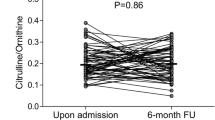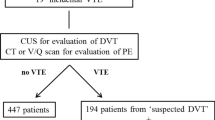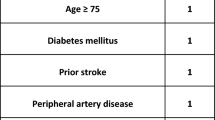Abstract
L-Arginine is the substrate of endothelial nitric oxide synthase and the main precursor of nitric oxide in the vascular endothelium, thus its effects are mediated largely by increases in nitric oxide production. L- Arginine has antioxidant and antiapoptotic properties, increases smooth muscle relaxation, inhibits the expression of adhesion molecules and chemotactic peptides, decreases endothelin-1 expression, and inhibits platelet aggregation. This amino acid also improves endothelial function in patients with coronary artery disease and dilates human epicardial atheromatous coronary arteries. Despite the positive results from small case–control studies, it is still unclear whether chronic administration of L-arginine has any effect on clinical outcome in patients with coronary artery disease. In addition, other indirect strategies, such as the inhibition of arginase, could prove more effective at improving intracellular L-arginine bioavailability than exogenous L-arginine administration. The potential clinical usefulness of L-arginine, therefore, needs further evaluation in large, prospective clinical trials. Here, we present a critique of the existing literature about the role of L-arginine in the prevention of atherosclerosis.
Key Points
-
L-Arginine is the substrate of endothelial nitric oxide synthase and the main precursor of nitric oxide in the vascular endothelium
-
Evidence indicates that intra-arterial or intravenous infusion of L-arginine rapidly improves nitric oxide bioavailability in the coronary arteries in both animal models and humans
-
Oral treatment with L-arginine seems to improve endothelial function in high-risk patients, but this effect is not observed in healthy individuals, or in patients with coronary atherosclerosis or myocardial infarction who are receiving optimum medical treatment
-
Although L-arginine is not associated with any serious adverse effects, there is still no conclusive evidence for its use for primary or secondary prevention of adverse cardiovascular events
This is a preview of subscription content, access via your institution
Access options
Subscribe to this journal
Receive 12 print issues and online access
$209.00 per year
only $17.42 per issue
Buy this article
- Purchase on Springer Link
- Instant access to full article PDF
Prices may be subject to local taxes which are calculated during checkout


Similar content being viewed by others
References
Tousoulis D et al. (2002) L-arginine in cardiovascular disease: dream or reality? Vasc Med 7: 203–211
Hecker M et al. (1990) The metabolism of L-arginine and its significance for the biosynthesis of endothelium derived relaxing factors: cultured cells recycle L-citrulline to L-arginine. Proc Natl Acad Sci USA 87: 8612–8616
Ward ME et al. (2005) Hypoxia induces a functionally significant and translationally efficient neuronal NO synthase mRNA variant. J Clin Invest 115: 3128–3139
Kleinert H et al. (2004) Regulation of the expression of inducible nitric oxide synthase. Eur J Pharmacol 500: 255–266
Forstermann U and Munzel T (2006) Endothelial nitric oxide synthase in vascular disease: from marvel to menace. Circulation 113: 1708–1714
Tousoulis D et al. (2006) Nitric oxide in coronary artery disease: effects of antioxidants. Eur J Clin Pharmacol 62 (Suppl 13): S101–S107
Nagase S et al. (1997) A novel nonenzymatic pathway for the generation of nitric oxide by the reaction of hydrogen peroxide and D- or L-arginine. Biochem Biophys Res Commun 233: 150–153
Boger RH (2004) Asymmetric dimethylarginine, an endogenous inhibitor of nitric oxide synthase, explains the 'L-arginine paradox' and acts as a novel cardiovascular risk factor. J Nutr 134 (Suppl): S2842–S2847
Boger RH (2006) Asymmetric dimethylarginine (ADMA): a novel risk marker in cardiovascular medicine and beyond. Ann Med 38: 126–136
Channon KM and Guzik TJ (2002) Mechanisms of superoxide production in human blood vessels: relationship to endothelial dysfunction, clinical and genetic risk factors. J Physiol Pharmacol 53: 515–524
Tangphao O et al. (1999) L-arginine and nitric oxide-related compounds in plasma: comparison of normal and arginine free diets in a 24 h cross over study. Vasc Med 4: 27–32
Bode-Boger SM et al. (1998) L-arginine-induced vasodilation in healthy humans: pharmacokinetic-pharmacodynamic relationship. Br J Clin Pharmacol 46: 489–497
Miller AL (2006) The effects of sustained-release-L-arginine formulation on blood pressure and vascular compliance in 29 healthy individuals. Altern Med Rev 11: 23–29
Boger RH and Ron ES (2005) L-arginine improves vascular function by overcoming deleterious effects of ADMA, a novel cardiovascular risk factor. Altern Med Rev 10: 14–23
Bosmans JM et al. (1999) Continuous perivascular L-arginine delivery increases total vessel area and reduces neointimal thickening after experimental balloon dilatation. Arterioscler Thromb Vasc Biol 19: 767–776
Panza JA et al. (1993) Effect of increased availability of endothelium-dependent vascular relaxation in normal subjects and in patients with essential hypertension. Circulation 87: 1475–1481
Hirooka Y et al. (1994) Effect of L-arginine on acetylcholine-induced endothelium-dependent vasodilation differs between coronary and forearm vasculatures in humans. J Am Coll Cardiol 24: 948–955
Tousoulis D et al. (1999) Effects of L -and D-arginine on the basal tone of human diseased coronary arteries and their responces to substance P. Heart 81: 505–511
Niebauer J et al. (1999) Local L-arginine delivery after balloon angioplasty reduces monocyte binding and induces apoptosis. Circulation 100: 1830–1835
Egashira K et al. (1996) Effects of L-arginine supplementation on endothelium-dependent coronary vasodilation in patients with angina pectoris and normal coronary angiograms. Circulation 94: 130–134
Ceremuzynski L et al. (1997) Effect of supplemental oral L-arginine on exercise capacity in patients with stable angina pectoris. Am J Cardiol 80: 331–333
Quyyumi AA (1998) Does acute improvement of endothelial dysfunction in coronary artery disease improve myocardial ischemia? A double-blind comparison of parenteral D- and L-arginine. J Am Coll Cardiol 32: 904–911
Tentolouris C et al. (2000) Serum cholesterol level, cigarette smoking and vasomotor responses to L-arginine in diseased epicardial coronary arteries. Am J Cardiol 85: 500–503
Tousoulis D et al. (2005) Effects of vitamin C on intracoronary L-arginine dependent coronary vasodilatation in patients with stable angina. Heart 91: 1319–1323
Suzuki T et al. (2002) Effect of local delivery of L-arginine on in-stent restenosis in humans. Am J Cardiol 89: 363–367
Clarkson P et al. (1996) Oral L-arginine improves endothelium-dependent dilation in hypercholesterolemic young adults. J Clin Invest 97: 1989–1994
Bode-Boger SM et al. (2003) Oral L-arginine improves endothelial function in healthy individuals older than 70 years. Vasc Med 8: 77–81
Chin-Dusting JP et al. (1996) Effects of in vivo and in vitro L-arginine supplementation on healthy human vessels. J Cardiovasc Pharmacol 28: 158–166
Adams MR et al. (1997) Oral L-arginine improves endothelium dependent dilatation and reduces monocyte adhesion to endothelial cells in young men with coronary disease. Atherosclerosis 129: 261–169
Blum A et al. (1999) Clinical and inflammatory effects of dietary L-arginine in patients with intractable angina pectoris. Am J Cardiol 83: 1488–1490
Maxwell AJ et al. (2002) Randomized trial of a medical food for the dietary management of chronic stable angina. J Am Coll Cardiol 39: 37–45
Cannon RO III (2002) Oral L-arginine (and other active ingredients) for ischemic heart diseases. J Am Coll Cardiol 39: 46–48
Lerman A et al. (1998) Long-term L-arginine supplementation improves small-vessel coronary endothelial function in humans. Circulation 97: 2123–2128
Yin WH et al. (2005) L-arginine improves endothelial function and reduces LDL oxidation in patients with stable coronary artery disease. Clin Nutr 24: 988–997
Blum A et al. (2000) Oral L-arginine in patients with coronary artery disease on medical management. Circulation 101: 2160–2164
Walker HA et al. (2001) Endothelium-dependent vasodilation is independent of the plasma L-arginine/ADMA ratio in men with stable angina. J Am Coll Cardiol 38: 499–505
Oomen CM et al. (2000) Arginine intake and risk of coronary heart disease mortality in elderly men. Arterioscler Thromb Vasc Biol 20: 2134–2139
Schulman SP et al. (2006) L-arginine therapy in acute myocardial infarction: the Vascular Interaction With Age in Myocardial Infarction (VINTAGE MI) randomized clinical trial. JAMA 295: 58–64
Loscalzo J (2003) Adverse effects of supplemental L-arginine in atherosclerosis: consequences of methylation stress in a complex catabolism? Arterioscler Thromb Vasc Biol 23: 3–5
Stead LM et al. (2001) Methylation demand and homocysteine metabolism: effects of dietary provision of creatine and guanidinoacetate. Am J Physiol Endocrinol Metab 281: E1095–E1100
Sydow K (2003) ADMA and oxidative stress are responsible for endothelial dysfunction in hyperhomocyst(e)inemia: effects of L-arginine and B vitamins. Cardiovasc Res 57: 244–252
Cassone Faldetta M et al. (2002) L-arginine infusion decreases plasma total homocysteine concentrations through increased nitric oxide production and decreased oxidative status in Type II diabetic patients. Diabetologia 45: 1120–1127
Lee J et al. (2003) Translational control of inducible nitric oxide synthase expression by arginine can explain the arginine paradox. Proc Natl Acad Sci USA 100: 4843–4848
Schnabel R et al. (2005) Asymmetric dimethylarginine and the risk of cardiovascular events and death in patients with coronary artery disease: results from the AtheroGene study. Circ Res 97: e53–e59
Böger GI et al. (2004) Improvement of endothelium dependent vasodilation by simvastatin is potentiated by combination with L-arginine in patients with elevated asymmetric dimethylarginine levels [abstract]. J Am Coll Cardiol 43 (Suppl): 525A
Zoccali C et al. (2001) Plasma concentration of asymmetrical dimethylarginine and mortality in patients with end-stage renal disease: a prospective study. Lancet 358: 2113–2117
Berkowitz DE et al. (2003) Arginase reciprocally regulates nitric oxide synthase activity and contributes to endothelial dysfunction in aging blood vessels. Circulation 108: 2000–2006
Vallance P and Leiper J (2004) Cardiovascular biology of the asymmetric dimethylarginine:dimethylarginine dimethylaminohydrolase pathway. Arterioscler Thromb Vasc Biol 24: 1023–1030
Cooke JP et al. (1992) Antiatherogenic effects of L-arginine in the hypercholesterolemic rabbit. J Clin Invest 90: 1168–1172
Boger RH et al. (1995) Supplementation of hypercholesterolemic rabbits with L-arginine reduces vascular release of superoxide anions and restores NO production. Atherosclerosis 117: 273–284
Böger RH et al. (1997) Dietary L-arginine reduces the progression of atherosclerosis in cholesterol-fed rabbits: comparison with lovastatin. Circulation 96: 1282–1290
Wang BY et al. (1994) Dietary arginine prevents atherogenesis in the coronary artery of hypercholesterolemic rabbits. J Am Coll Cardiol 23: 452–458
Davies MG et al. (1999) Combination therapy of cholesterol reduction and L-arginine supplementation controls accelerated vein graft atheroma. Ann Vasc Surg 13: 484–493
Hutchison SJ et al. (1999) Effects of L-arginine on atherogenesis and endothelial dysfunction due to secondhand smoke. Hypertension 34: 44–50
Le Tourneau T et al. (1999) Role of NO in restenosis after experimental balloon angioplasty in the hypercholesterolemic rabbit: effects on neointimal hyperplasia and vascular remodeling. J Am Coll Cardiol 33: 876–882
Corseaux D et al. (1998) Enhanced monocyte tissue factor response after experimental balloon angioplasty in hypercholesterolemic rabbits: inhibition with L-arginine. Circulation 98: 1779–1782
Girerd XJ et al. (1990) L-arginine augments endothelium-dependent vasodilation in cholesterol-fed rabbits. Circ Res 67: 1301–1308
Wang BY et al. (1996) Arginine restores nitric oxide activity and inhibits monocyte accumulation after vascular injury in hypercholesterolemic rabbits. J Am Coll Cardiol 28: 1573–1579
Boger RH et al. (1998) Dietary L-arginine and alpha-tocopherol reduce vascular oxidative stress and preserve endothelial function in hypercholesterolemic rabbits via different mechanisms. Atherosclerosis 141: 31–4355
Acknowledgements
D Tousoulis and RH Böger contributed equally to this work.
Author information
Authors and Affiliations
Corresponding author
Ethics declarations
Competing interests
The authors declare no competing financial interests.
Supplementary information
Rights and permissions
About this article
Cite this article
Tousoulis, D., Böger, R., Antoniades, C. et al. Mechanisms of Disease: L-arginine in coronary atherosclerosis—a clinical perspective. Nat Rev Cardiol 4, 274–283 (2007). https://doi.org/10.1038/ncpcardio0878
Received:
Accepted:
Issue Date:
DOI: https://doi.org/10.1038/ncpcardio0878
This article is cited by
-
Association between egg consumption and arterial stiffness: a longitudinal study
Nutrition Journal (2021)
-
LDL-cholesterol lowering effect of a new dietary supplement: an open label, controlled, randomized, cross-over clinical trial in patients with mild-to-moderate hypercholesterolemia
Lipids in Health and Disease (2018)
-
Analysis of repeated leukocyte DNA methylation assessments reveals persistent epigenetic alterations after an incident myocardial infarction
Clinical Epigenetics (2018)
-
Impaired Endothelial Nitric Oxide Synthase Homodimer Formation Triggers Development of Transplant Vasculopathy - Insights from a Murine Aortic Transplantation Model
Scientific Reports (2016)
-
Probing of l-Arginine as an Additive for the Temperature-Induced Aggregation of Veterinary Growth Hormones: Fluorescence Study
Molecular Biotechnology (2011)



